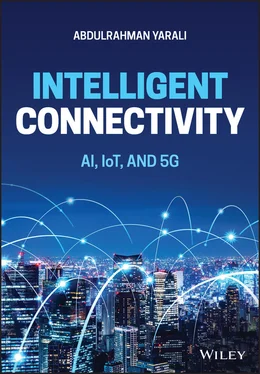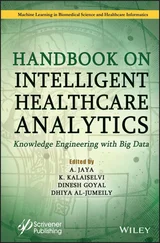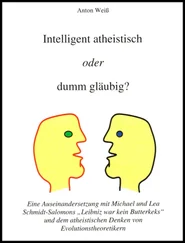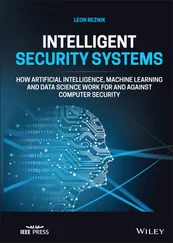2.1.2 Machine Learning as a Precursor to AI
The learning algorithms discussed in the section above constitute the overall topic or subject of machine learning. This involves the study and innovation of both the algorithms and statistical frameworks where essential and critical tasks can be ensured without a specific pattern, depending upon how inference and adaptation should work. Essentially speaking, machine learning operations are viewed as being a “subset” of AI in which the algorithms implemented could effectively create a separate mathematical model through the full realization of the available data, but without the presence of a specific embedded task that has been constantly defined (Andrieu et al. 2003). At present, machine learning is being used. There is a definitive closeness detected for the technology in computational statistics, which can be immensely beneficial to everyone involved. There are many forms of learning made possible by this strain of technologies. However, AI is tied with that specific active learning event, which works based on choosing the exact variables to work upon selectively at the beginning itself (Arel, Rose, and Karnowski 2010). As a result of this, there is a significant decrease in costs accrued in terms of time and output. Therefore, machine learning holds a prominent position, which could be why fully‐fledged AI technologies could be developed in many ways. It is essential to “proverbially” go down to a far deeper extent than what one can imagine (West 2016). This is the overall effect of what machine learning could achieve concerning the technology of AI, and reflects far greater possibilities, all of which would be rendered quite possible even if the need for knowledge goes deeper than what one might imagine.
2.1.3 Deep Learning and Realization of AI
Deep Learning constitutes a part of the broader family of machine learning based upon the notion of artificial neural networks (ANNs). However, that is specifically a limited viewpoint of the technology at large. This has also been known for the inclusion of propositional formulae organized by multiple generative models, such as the specific nodes present in the deep belief model (deep neural networks) and deep Boltzmann machines (Chen and Zhao 2014). Across deep learning, the most apparent form of realization is the passage of data through multiple layers, wherein the data in question becomes more abstract and composite by the fold. ANNs formulate an essential aspect of this form of technology as it aims to be inspired by the biological neural networks in living beings. Particularly, these systems, when implemented, can improve themselves instead of doing some specific tasks at hand. However, one must also consider the deep neural network option, as it is an ANN but with multiple inputs and output layers. The network moves based on calculating the probability of multiple outputs and presents the seemingly most appropriate options in light of a given problem (Katsaros and Dianati 2017). Through their implementation with computer vision, speech recognition, network filtering, social media filtering, etc., deep learning has achieved a completely different domain, which has moved close to the manifestation of actual AI in terms of the improvement factor.
2.1.4 Consideration of the Next Generation Wireless Technology
Communication is always at the forefront of all conversations about human innovation and realization. One of the most consequential developments to happen all across this specific domain involves that of wireless communication. In that specific definition, telephone services are provisioned to remote phone devices, allowing free movement instead of just being fixed at a single location as it had been in the past. These devices specifically receive and can send radio signals with cellular base stations fixed in proximity and utilize high‐performing antennas (Hassabis et al. 2017). These are then connected to cable communication networks and switching systems that perform the translation of the all‐important data, which is being transmitted as audio signals. The 5G constitutes next‐generation cellular system technology, where the Third Generation Partnership Project (3GPP) defines it as the 5G New Radio (5G NR) to indicate the developments and innovations across cellular technology as well as other systems (Al‐Falahy and Alani 2017). This transition and evolvement follow that of past generations of second generation (2G), third generation (3G), and fourth generation (4G) networks, respectively, in the past. The 5G NR will carry forward all the wireless communication expectations of the past while also including essential functions that contribute to the enhancements of private networks, which may have a wide field of applications across domains like the IoT and critical industrial sector communications at large.
The prospective plans have not actualized in reality. Instead, there are many speculations apparent across the board. Of note is the implementation of millimeter waves, which have shorter ranges but are tremendously faster than the microwave standard. However, the considerations for accessibility and communicative qualities have been put into question, and it remains to be seen how the research and development can overcome it (Simsek et al. 2016). However, it is also essential to note other technological enhancements. For example, this is specifically apparent from the prospect of Multiple‐Input Multiple‐Output (MIMO) (Chen and Zhao 2014), which should provide the necessary quality of transmission through the cell system antennas connected to a specific device. This configuration and arrangement will ensure that the device receives various data streams in question through parallel transmissions.
At present, three specific implementation plans have been reserved that form the prospective aim of the entire field of 5G technology at large. The first one is Enhanced Mobile Broadband (eMBB), which will act as the successor of the highest standard of internet services at the moment, the Fourth Generation Long‐Term Evolution () Broadband services (Chen and Zhao 2014). These should have a better capacity, faster connections, and a higher quality of throughput, which will intrinsically allow for a higher degree of communications than at any time before. The Ultra‐Reliable Low‐Latency Communications (uRLLC) refers to enhancing the network variables that could promote robust and uninterrupted communications under any given setting. On the other hand, Massive Machine Type Communications (mMTC) would allow for a greater inclusion of low‐cost, low‐power devices across a network with a significant focus upon high scalability and better battery performance (French and Shim 2016). According to the International Telecommunications Union's (ITU) IMT 2020 standard, the connectivity speed benchmark has been kept only slightly higher than that which 4G LTE provided.
2.1.5 Potential of AI and 5G Network Technology Together
The 5G networks must present a chaotic and confusing structure in its innate formation that has not yet been anticipated by those present in the telecommunication industry. If there is no proper mode of assurance, the sheer growth that should occur horizontally across the board could result in extremely critical scenarios (Sánchez, Sánchez‐Picot, and De Rivera 2015). Moreover, the entire scenario is quite inimitably challenging, to say the least (Al‐Falahy and Alani 2017). Therefore, the AI routines applicable in the form of machine and deep learning, alongside the potential algorithms, could nevertheless prove to be extremely beneficial and could lead to the necessary innovations required across both technologies.
It is essential to consider that the MIMO possibilities are achievable, especially considering the case of what deep learning brings to the table. With the help of such a technology, it is entirely plausible that cell site distribution and leveraging associated processes will become completely possible (Katsaros and Dianati 2017). In addition to this, site maintenance and repair operations could also be managed better, especially when considering that the 5G Network case is spread quite widely. Many learning algorithms could be implemented to satisfactorily deal with the multidimensional data in 5G that will often coalesce, transform, or shift from one specific type to another (Akyildiz, Wang, and Lin 2015). Essentially speaking, the chaotic nature of 5G would be best brought under control by the effective use across its systems.
Читать дальше












